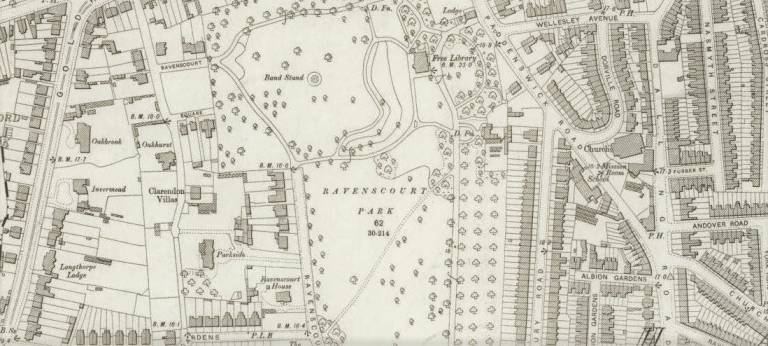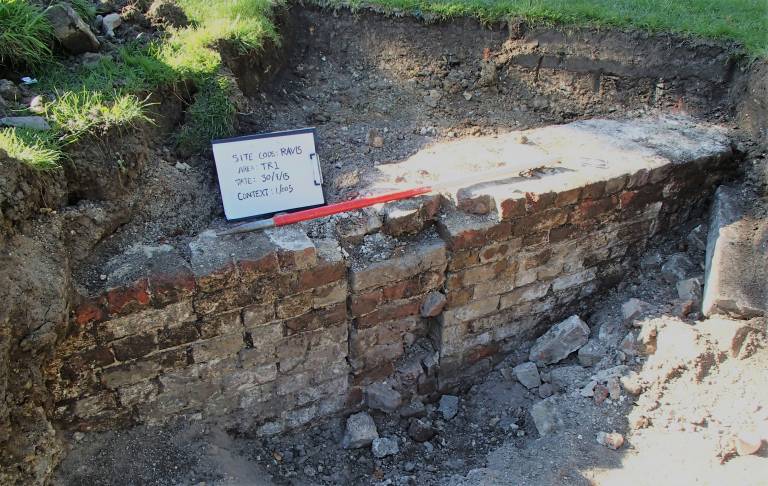Ravenscourt Park Excavations
27 October 2015
In August 2015 Archaeology South-East were commissioned by The Friends of Ravenscourt Park (London Borough of Hammersmith and Fulham) to undertake the first ever archaeological investigation in the park, targeting the 14th century remains of Palingswick Manor.

In August 2015 Archaeology South-East were commissioned by The Friends of Ravenscourt Park (London Borough of Hammersmith and Fulham) to undertake the first ever archaeological investigation in the park, targeting the remains of Palingswick Manor, a moated site dating from the 14th century, developed as a Georgian residence and later destroyed by WWII bombing.
The site work formed the second stage of the HLF-funded 'Discovering the Hidden History of Ravenscourt Park' project, conceived by the Friends in partnership with the Museum of London. Previous project work had included a public display of historical material and artefacts, and a geophysical survey of the site which appeared to successfully locate the eastern arm of the moat and an area of demolition rubble corresponding with the location of the house itself. Archaeology South-East's remit was to investigate these remains through trial trench evaluation.
The evaluation was undertaken during the week of the 28th of September 2015, with trenches placed over the house platform, the purported eastern arm of the moat and the speculative location of a causeway across the moat. The site is located next to the one of the park's principal thoroughfares and the investigation, accompanied by stalls manned by The Friends group and the Museum, attracted a great deal of interest, providing the public with background information and the opportunity to examine finds from the trenches as ASE's work progressed.

As is often the case, the results of the evaluation posed almost as many questions as they answered. The trench targeted on the house successfully located the rear wall of the Georgian building, together with a later floor surface skimmed in concrete, buried beneath a deep deposit of demolition rubble. Whereas this can be related to both the geophysical survey results and nineteenth-century historic map evidence, evidence for the moat and its putative causeway was more elusive, leaving their precise locations open to some debate. Brick-built features including two sections of wall, a brick pad and the vaulted roof of a culvert were revealed, probably relating to features depicted to the east of the house on an estate plan of the mid-eighteenth century.
The trenches have now been backfilled and post-excavation work is underway. The Friends group hope that the results of ASE's work will support an application for further HLF funding, enabling the wider community to participate in the excavation of the site and some of the questions regarding the origins, development and eventual destruction of Palingswick Manor to be answered.
 Close
Close

